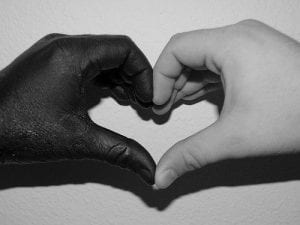Even in a society that is progressing towards equality with less gender-based stereotypes, they still find their way into many aspects of our lives. On a global scale, women and girls are responsible for 75% of unpaid care and domestic work, totaling to an average of 4 hours and 25 minutes of unpaid care work every day compared to only 1 hour and 23 minutes for men (Power, 2020). This disparity of doing unpaid care and domestic work is called the “second shift.” The “second shift” is referred to as “undervalued and underpaid emotional labor that is mostly taken care of by women,” (Power, 2020). This was especially seen during the COVID-19 pandemic, when children were not able to go to school. Women had to act as teachers and caregivers, all while maintaining their full-time jobs. As a result, women have become extremely stressed, causing damage to their mental health.
Kate Power, an independent researcher and consultant based in Germany, defined the pandemic response as “gender-regressive.” During the pandemic, many couples who both worked had to pick the parent that took the biggest “hit.” This burden often fell on women “partly because of the persistence of traditional gender roles and partly because of the structure of women’s economic participation, which is more likely to be part-time, flexible, and less remunerative,” (Powers, 2020). Women often work their part-time or full-time jobs, and come home to yet another job with their family. For example, Irene Zak, a woman born in the Philippines, recalls that her mother would work a 9 to 5 job, then come home and help her with homework and do activities with her to make up for the lost time (Yau, 2020). This is common for women, and the pandemic further increased these responsibilities to an exhaustive extent.
I was not surprised by what I learned in the readings. When everyone was quarantined in the summer of 2020, I heard a lot of stories from my mom’s friends about how difficult it was for them. I heard how many mothers were taking on the responsibility of tutoring their children, while also trying to maintain their jobs. I also learned in a past class that much of the burden of the pandemic went on mothers and women because they tend to be the caretakers of the family. I imagine it is very difficult and stressful to balance so much at once. All of that stress can be extremely detrimental to both physical and mental health, and work needs to be done to make the work load more equal between men and women.
Chore Chart:

If I have children, the Family Leave Act would allow me to take time off to spend with my family. However, this is often unpaid, so it could be difficult to take off for an extended period of time, depending on what my financial situation is at the time. I plan to become a doctor, and it can be difficult to take time off in that speciality. I hope that I work with a flexible employer that understands and allows me to take ample maternity leave. If a child gets a major illness, I would hope that I could take a medical leave. I have heard stories about women struggling to take time off for family purposes, and sometimes it has even led to them being passed up for jobs and promotions. Since I am going into a specialty that is majority male, I hope that I do not come across this problem. However, I am aware that it could happen and I hope to be prepared to defend myself and ensure I am fairly treated. If I am unable to take time off or enough time off, I would turn to my parents for help. They would most likely be willing to help with childcare for a temporary period.
References
Power, K. (2020). The COVID-19 pandemic has increased the care burden of women and families. Sustainability: Science, Practice and Policy, 16(1), 67–73. https://doi.org/10.1080/15487733.2020.1776561
Yau, B. (2020, May 11). Motherhood, in Their own words: Asian American women reflect on differences between how their mothers raised them and how they are raising their own children. AsAmNews. Retrieved October 4, 2021, from https://asamnews.com/2020/05/08/motherhood-in-their-own-words-asian-american-women-reflect-on-differences-between-how-their-mothers-raised-them-and-how-they-are-raising-their-own-children//.


June 25, 2024 at 10:16 am
Hi, Do you know about STR Funds fasa 3?
https://semakanstr.com/str-fasa-3/
October 29, 2024 at 4:19 pm
“Semakan STR” refers to the process of checking or verifying tax records or documents in Malaysia. It helps individuals and businesses review their tax status and ensure compliance with tax regulations.
Semakan STR login
October 30, 2024 at 5:35 pm
Well done! This article covered all the key points and gave a balanced view
Jack Webber Age. Thank you for providing such quality journalism.
November 11, 2024 at 9:57 pm
Thanks for sharing us. its an amazing post
Violet Myers Net Worth